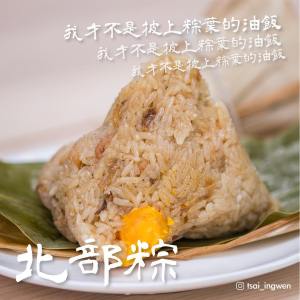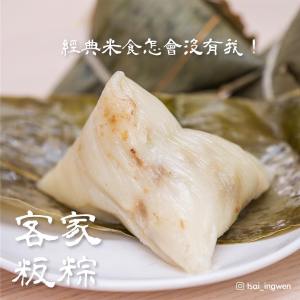Rice dumplings (zòngzi, ròuzòng or bah-chàng) are almost synonymous to the Dragon Boat Festival (or the Duan Wu/Double Fifth Festival.) Zongzi is an iconic staple eaten during this annual celebration, which requires a time-consuming process to make, but results in a delicious, sweet or savory, sticky wholesome dish.
Story
The origins of zongzi begins with the story of the Dragon Boat Festival and a beloved and famed Chu poet, Qu Yuan. Following Qu Yuan’s death, the villagers who admired him would throw rice, packed in bamboo, into the river to prevent the fish, crabs, and river dwellers from eating his body. This eventually evolved into the classic zongzi dish eaten today–sticky rice packed with other ingredients wrapped inside bamboo leaves.
How to Make ZongZi
Here is a video from Angel Won’s Kitchen, along with a recipe on how to make your own zongzi:
Different kinds of Zongzi
While the boiled and steamed versions of Zongzi are the most prevalent and well-known in Taiwan, their flavors vary greatly by region. Also to note, this is a type of “dumpling” so anyone can get adventurous and put in all types of fillings.

Southern Style

The key difference between the Southern style zongzi and others is that the Southern style is boiled. They are made by stuffing raw, pre-soaked glutinous rice with cooked fillings (often more savory, like peanuts, shiitake mushrooms, and pork) into sweet bamboo (麻竹) leaves. They are tightly wrapped and then boiled, until they are soft to the touch and the aromatic fragrance of bamboo leaves comes out. This method results in a lighter-tasting zongzi with a stickier texture, fragrant with the scent of bamboo leaves. Southern zongzi are typically served with sauces and a sprinkle of peanut powder.
Northern Style

Unlike the Southern style, the Northern style zongzi is made by not just cooking the fillings, but also frying the raw glutinous rice with seasonings until partially cooked before wrapping. This difference in preparation results in darker, chewier, and greasier zongzi.
Hakka Style

Think a very large, savory mochi. Unlike the Northern and Southern styles where you can see the individual grains of rice, the Hakka style mashes the sticky rice together until uniform, which allows for a unique, smooth, and “Q” texture.
HuZhou Style

Taipei’s Nanmen Market (南門市場) is the destination for Huzhou (湖州) zongzi named after their original source in China’s Zhejiang Province. These have a distinctive, elongated tetrahedral shape and are available in both savory pork and sweet red bean versions. The savory version marinates the glutinous rice and fillings in soy sauce first, giving the HuZhou style zongzi a heavier, flavorful taste.
Vegetarian Style

As Taiwan’s culture has heavy influences from Buddhist beliefs, zongzi has a special vegetarian version. While the northern style simply remove the meat and leave the other fillings, the southern vegetarian zongzi would leave only peanuts.
Sweet Style

Why stop at savory? Soaking the rice in sugar water, this sweet dessert is the perfect snack to cool down in the summer.
Ice Dumpling

Here is another sweet, but colder version. The ice dumpling has a gelatin casing that surrounds the sweet filling (usually a sweet paste like red bean.) The ice dumpling is a modern invention for this culture of desserts.
Cinavu (NOT a ZongZi, but looks like one)

Not your traditional zongzi, but the cinavu’s (吉拿富) shape is very similar. Normally filled with taro and pork, cinavu originates from the Paiwan tribe in Taiwan. Since the DuanWu festival was brought over from China, the Taiwanese Indigenous do not celebrate the DuanWu festival.
Resources:

Uh what is Hu Province and Buhhist Raisins?
LikeLike
Meant to say HuZhou. And Raisins was a typo from “religion”. Fixed. Thanks
LikeLike